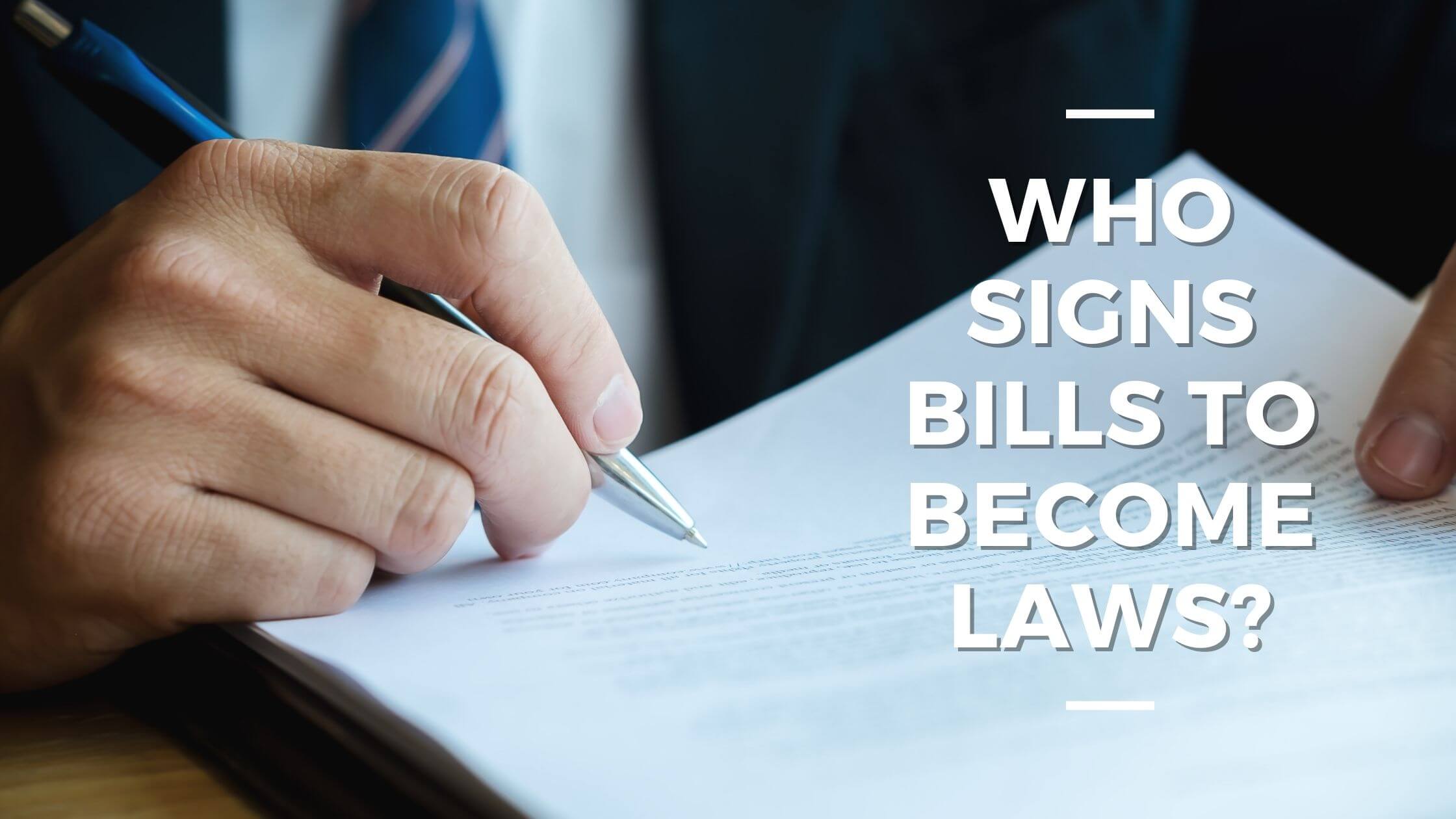Table of Contents
ToggleTo pass the US citizenship test, you will have to answer 10 of a possible 100 questions. The following question is from the USCIS test.
Who signs bills to become laws?
Answer:
The President.
The following is a full explanation of the USCIS question:
The President of the United States Signs Bills to Become Laws
After a bill passes through both chambers of the United States Congress, it will then be presented to the head of the executive branch, the President of the United States, for his approval. Accordingly, the president then has a period of not more than 10 days to affix his signature to the bill. If he chooses to sign it within that period, the bill becomes law. Likewise, if he fails to sign it within that same period, the bill will still become a new law.
The president may also choose to veto the bill in its entirety or partially. If, within that 10-day period, the president chooses to veto the bill, he will return it to the United States Congress along with a message explaining why he vetoed it. If Congress adjourns during that period, a failure of the president to either sign or otherwise veto the bill is commonly referred to as a pocket veto.
The Introduction of a Bill
All bills start the same way. After a legislator in Congress has discovered an issue that can only be resolved through congressional action, they will prepare a draft proposal. A single member of Congress may author this draft proposal, or it may be a joint effort. Any member of Congress, regardless of whether they are congressional or senatorial representatives, may introduce a bill.
Once a draft bill has been prepared, it is time to present it to the floor. In the lower chamber, it is the responsibility of the Secretary General to conduct the initial reading and committee assignment. However, in the upper chamber, the Senate Parliamentarian conducts the initial reading and assigns the bill to a committee.
The initial reading of the introduced bill, regardless of whether it’s in the upper or lower house, is merely to identify the title and bill number in a legislative session. It’s not until the second reading that the entire text of the proposed bill is read to the floor.
Committee Debates
It is the responsibility of the Secretary General and the Senate Parliamentarian to determine which committee will be responsible for reviewing the legislation. The proposed bill is then sent to the appropriate committee chair, who then has to decide whether the bill’s contents can be discussed in committee or whether public hearings need to take place.
There is no need for any form of public hearings for most bills. Generally, the representatives assigned to the committee will discuss, debate, and offer amendments to the proposed bill. However, when there is a need to hold public hearings, a date for the hearing is scheduled. The members of the committee will then be able to invite experts in their field to help debate and discuss the contents of the proposed bill.
Once the discussion and debate have ended, the members of the committee will then have to decide whether to send the bill as is to the house floor, make an amendment to the bill, or reject it. In the event that a majority of the committee members vote in favor of the passage of a government bill, it is then sent to the chamber floor, where every member of the house will be able to discuss, debate, and vote on whether it should pass.
The House of Representatives Passes a Bill
Before any bill can become law, it has to pass through both the upper and lower house. Except for specific types of legislation, any member of Congress may introduce a bill. However, most bills will originate in the House of Representatives and, if passed, will be referred to the Senate.
When a bill passes one house and is transmitted to the other house, it will undergo the same process. If the bill is passed from the lower house to the upper house, the Senate parliamentarian will do an initial reading before sending the bill to a committee. This process is repeated until it is either passed or rejected by the Senate. The only real difference is that the rules of the Senate are slightly different than those of the House of Representatives, insomuch as they are more formal in nature.

Get Smarter on US News, History, and the Constitution
Join the thousands of fellow patriots who rely on our 5-minute newsletter to stay informed on the key events and trends that shaped our nation's past and continue to shape its present.
The United States Senate Passes a Bill
A bill may either pass or die after the proposed bill has made its way through the initiating house and transmitted to the second house for final action. It is entirely possible for the Senate to fail to act on a bill. If the Senate does not act on it, it will simply die. Moreover, any proposed bill can die at any point of the process in the Senate, just as it would before the House of Representatives.
Throughout the entire legislative process, a bill may be amended multiple times. As a result, the proposed bill that passes in the Senate may be quite different from the one passed in the House of Representatives. To resolve any disputes that may arise, a conference committee will need to be established so that representatives from both houses can meet, discuss, and debate the final draft. After a conference committee action to sign off on the final draft, it is sent to the president.
The President’s Signature
The president has 10 days from receipt of the proposed bill to sign it into law during that time. He may choose to sign the law or veto it. Generally, when a bill passes to the president and the president has agreed to sign it, there is a signing ceremony. The sponsors and cosponsors of the bill are usually invited to participate in the signing.
Once signed, the bill is sent back to the house of origin, where it is prepared and transmitted for publication and distribution. It is the responsibility of the Official Gazette Office to ensure that the signed law is properly recorded and that all relevant agencies are notified.











